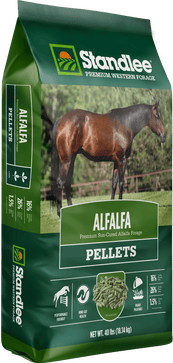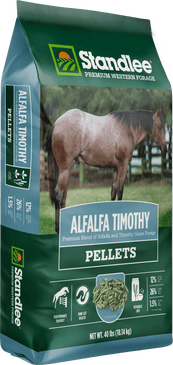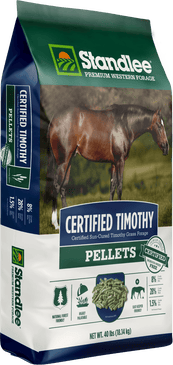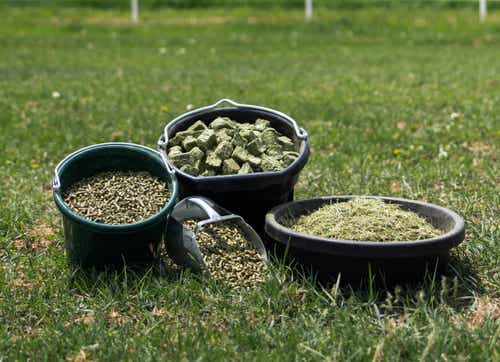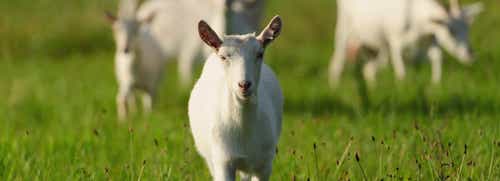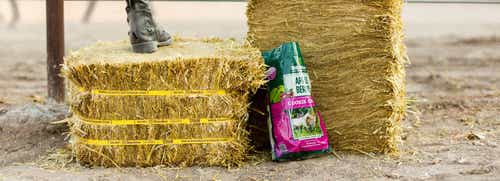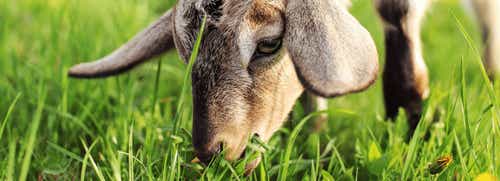
Spring into Action: Simple Steps to Bring Your Horse Back After Winter
With spring in the air, we will all want to get back in the saddle and start riding our horses. Many horse owners can’t ride or exercise their horses as much as they would like during the winter because they don’t have access to indoor facilities and the weather where they live is not conducive to outdoor riding or training. Bringing horses back into work after a winter vacation needs to be done gradually; you can start the horse back into work at a lower level and increase the length and intensity of workouts. At the same time, you must adjust the horse's feed as needed to address present body condition (too thin or too fat), as well as nutrient requirements for the increased work. It doesn’t matter what your horse’s level of fitness was when you stopped riding by the end of three or more months of inactivity, all conditioning your horse had is essentially lost. Even if the horse had plenty of turnout, many horses don’t do much more than eat and stand around, especially when the weather and ground conditions are bad. Here are a few simple guidelines you can use to ensure your horse a safe entrance back into exercise after a prolonged break.
Make feeding changes gradually
The horse is first and foremost a grazing animal that relies extensively on the bacteria present in its gastrointestinal tract to be able to process forages. These bacteria are a mix of different organisms that work together to the benefit of the horse. If the feeding program is changed suddenly, bacteria populations do not have time to adjust. Instead, large numbers of bacteria die, while others flourish, setting up a situation where toxins may be absorbed by the horse, resulting in digestive upset or colic. Some horses are just as sensitive to changes in hay as they are to changes in grains. A gradual change from one feedstuff to another provides enough time for the bacterial populations to adjust. For example, when changing either the type of hay or grain that is being fed, replace only about 20 percent to 25 percent of the current feed every other day, so that it takes a week or more for a complete change.
Be careful not to overwork
A horse that hasn’t seen much exercise over the winter can be just as excited about going out on that first ride as you are. Don’t mistake this eagerness for fitness, and don’t assume that the horse won’t do more than he is physically conditioned to do. Odds are that he will, and in two or three days, his muscles will really be feeling the effects.
Muscular aches and pains are not something you can "see" easily, but they will manifest themselves as back and gait stiffness, sluggishness, poor attitude toward work, and even the development of vices and refusals. These can progress into sporadic episodes of tying up or exertional rhabdomyolysis.
Sporadic exertional rhabdomyolysis occurs most commonly in horses that are exercised in excess of their level of conditioning. This happens frequently when a training program is accelerated too abruptly, particularly after an idle period of a few days, weeks, or months. Increased exercise on random hot, humid days may also elicit sporadic exertional rhabdomyolysis in susceptible horses because of high body temperatures, loss of fluid and electrolytes in sweat, and depletion of muscle energy stores. In some instances, horses seem more prone to exertional rhabdomyolysis following respiratory infections. Therefore, horses should not be exercised if they have a fever, cough, nasal discharge, or other signs of respiratory compromise. A well-designed gradual exercise program and a nutritionally balanced diet with appropriate caloric intake and adequate vitamins and minerals, are the core elements of treating sporadic exertional rhabdomyolysis.
As horses begin to work more, their requirement for water will also increase. Make sure the horse has free access to clean, fresh water. Water and electrolyte loss through sweat can cause the horse to perform poorly, and worst case, can make the horse become seriously ill.
Shedding a few pounds
In horses and ponies, “eating less” and “exercising more” are key elements for weight loss. Set realistic goals for weight loss and regularly monitor progress. Horses and ponies are individuals and will not all lose weight at the same rate. They didn’t get fat overnight and they won’t lose it all overnight either – be patient. As a guide, an effective weight loss regimen for a mature, light breed horse should result in the loss of approximately 55-65 pounds over a four to six week period. This decrease in bodyweight may be accompanied by the loss of about 1 unit of body condition score (BCS). Body weight (scale or by use of a weight tape) and body condition should be assessed regularly (e.g. every two to four weeks) during the weight reduction program so that progress can be monitored, and the program amended as required. Taking photographs of the horse, comparing before and after shots can also help assess visual condition. The body condition scoring system uses a 1 to 9 scale where 1 is emaciated and 9 is obese (optimal is considered 5 or 6).
As a first step toward weight loss, incorporating exercise without altering diet can sometimes sufficiently get your horse to an ideal weight. If feed restriction is also needed, grain and other concentrated sources of calories (e.g. commercial sweet feeds, feeds containing added fats) should be totally removed from the diet. Excessive feeding of other “treats” such as carrots and apples also should be curtailed. Forage should be the primary, if not sole energy providing component of the ration. A vitamin and mineral supplement should be used to supplement deficiencies in vitamins and minerals that exist in most hays and pasture.
Increasing body weight
If your horse is very thin, either a body condition score of 1 or 2 at the end of winter, it should be placed on a gradual increased level of nutrition in order to restore body weight. It takes 35 to 45 pounds of weight gain to change a horse’s body condition score by 1 unit (based on an 1100 pound horse). Therefore, a horse with a body condition score of 2 would need to gain approximately 132 pounds to increase their condition score to a 5. This would take around 6 months to achieve safely. When feeding large quantities of grain in order to increase the energy density of the ration, we must be careful not to feed more than 5 pounds of grain in any single feeding. Large grain meals pass more quickly than smaller meals through the digestive tract, therefore, fewer nutrients are absorbed and potential digestive disorders such as colic can occur. If the horse had a body condition score of 3 or 4 at the end of winter, it would obviously take much less time to get their body condition to an optimal level. Based on the assumptions outlined above, it would take approximately 2 to 4 months to achieve an optimal body condition. Using calorie sources such as highly digestible fiber sources and fat supplements will help increase the calorie density of the feeding, without adding extra bulk, and will help your horse gain weight faster and safer than simply adding extra grain. Alfalfa forage has more calories per pound than most grass hays and is an excellent addition to a weight gain feeding program. Fat supplements, such as vegetable oil, are much more energy dense than cereal grains. Vegetable oil is 99% fat while rice bran is approximately 20-25% fat. Adding a fat supplement to the diet will also help improve skin and coat condition especially after a cold dry winter.
In summary, when bringing horses back into work, we want to make all feeding changes gradually. Avoid overworking your horse beyond its fitness level and allow adequate time for your horse to regain or lose weight, to get them back to an optimal body condition for spring activities.
By Dr. Tania Cubitt & Dr. Stephen Duren
Standlee Nutritional Experts - Performance Horse Nutrition
References:
National Research Council. 2007. Nutrient Requirements of Horses: Sixth Revised Edition. Washington, DC: The National Academies Press. https://doi.org/10.17226/11653.

